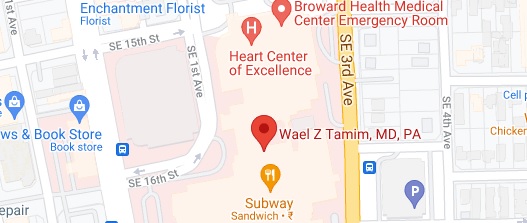
What is the Renal Artery?
The renal artery originates from the abdominal aorta, the largest artery in the abdomen, supplying blood to the kidneys. It is 4 to 6 cm long and has a diameter of 5 to 6 mm. The renal artery branches off to the functional part of the kidney responsible for filtering blood and making urine.
What is Renal Artery Stenosis?
Narrowing of the renal artery is called renal artery stenosis. This usually occurs due to the accumulation of plaque in the arteries. The plaque is made up of cholesterol and fats and may cause diminished or poor blood supply to the kidneys.
Your body misinterprets low blood pressure as the cause of poor blood supply to the kidneys. This results in an increased secretion of kidney hormones which in turn causes an increase in blood pressure. Renal stenosis, if left untreated, causes kidney failure.
What is Renal Artery Angioplasty?
It is a surgical procedure used to treat renal artery stenosis. Your surgeon uses a catheter (thin tube-like structure) to place a balloon or stent into your narrowed renal artery to widen it. Computed tomography or magnetic resonance angiography techniques are used by your surgeon to diagnose renal artery stenosis
Causes of Renal Artery Stenosis?
Aging is an important cause of plaque deposition and stenosis which cannot be controlled. Other causes include:
- High blood pressure
- Diabetes
- Smoking
- Excess use of alcohol
- Obesity and high cholesterol level
- Chronic kidney diseases
- Coronary artery stenosis (heart)
Procedure for Renal Artery Angioplasty
The surgical procedure for renal artery angioplasty involves the following steps:
- Your surgeon administers local anesthesia and makes a small incision near the hip or groin area.
- A balloon catheter is inserted into the artery and advanced to the site of plaque formation in the artery.
- Your surgeon uses an x-ray camera to view the images of your artery and guide the proper placement of the balloon.
- Once the balloon is at the site of the plaque, the balloon is inflated to widen the opening.
- Your surgeon may suggest the placement of a stent at the site of the plaque formation.
- Once the stent or balloon is in place, the catheters are removed.
- The incision is then closed with a bandage
Post-operative Measures for Renal Artery Surgery
It is necessary to follow these measures after your renal artery surgery for efficient recovery:
- You may return to your normal work schedule within a few days after surgery.
- It is necessary to take blood-thinning medicines as prescribed by your surgeon.
- You must stop smoking and consuming alcohol.
- Eat a healthy diet and exercise regularly.
- Visit your doctor as recommended to check for infections.
- If you are diabetic, take care to manage your blood sugar effectively.
Prevention of Renal Artery Stenosis
Renal artery stenosis preventive measures include:
- Regularly monitor your blood pressure
- Consume a heart-healthy nutritious diet to manage cholesterol levels and maintain proper body weight.
- If you have been diagnosed with hypertension, take medications to maintain normal blood pressure as prescribed by your doctor.
- Quit smoking and avoid consumption of alcohol to prevent the formation of plaque within your arteries.
- Exercise regularly to maintain good health. Practice yoga or meditation to manage stress effectively and reduce activities that cause stress and may lead to hypertension and renal stenosis.
Related Topics:
- Minimally Invasive Heart Surgery
- Atrial Fibrillation Corrective Surgery
- Percutaneous Mitral Valve Repair
- Removal of Masses or Tumors from the Heart
- Aortic Dissection
- Coronary Artery Bypass Grafting
- Aortic Valve Disease
- Aortic Stenosis
- Transcatheter Aortic Valve Replacement - TAVR
- Mitral and Aortic Valve Repair and Replacement
- Tricuspid Valve Disease
- Valvular Surgery


